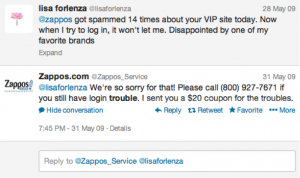Gain insights into balancing promotions, content themes and testing to boost email effectiveness throughout the year.

Your calendar is not just a pretty collection of dates and ideas; it’s the blueprint for a successful email marketing program. A strategically built calendar offers a bird’s eye view of your year ahead, ensuring you hit every big sales opportunity and highlight everything that sets your business apart.
Below are six tried-and-tested pointers to unlock the full potential of your email marketing calendar.
1. Optimize your timing
When it comes to your calendar, the further ahead you plan, the better. Hopefully, this year’s Christmas promotion is already prepped and ready to go, and you’re currently thinking about Valentine’s Day.
In addition to the year’s key marketing dates, highlight other promos for your business. August has no holidays, so use this gap in the calendar to your advantage, like getting rid of surplus stock with a clearance sale or A/B testing discounts vs. free items on your email pop-ups to acquire new contacts.
Remember, you don’t want to dilute any promotions. Ensure your calendar only has one sale happening at a time. This includes early access sends and extended sale offers. Give your customers enough time to get excited about a promo, and allow enough time for any stragglers to catch up before you introduce the next big sale.
2. Fine-tune your cadence
One powerful message beats 20 mediocre campaigns every time. While you want to appear regularly in a customer’s inbox, bombarding them with emails is not the way to go. The best way to make an impression is to find the right balance.
While there’s no standard amount of emails you should send (each business is unique, after all), aim for at least one per week. Conversely, if you’re sending one per day, make sure your content is super relevant each time.
A good rule of thumb is to ask if a customer needs to read this email now, and how they will benefit if they do. If you’re sending emails just for the sake of it, it’s best to scale back and wait until you have something worth reading. If you’re not sure, test a slightly higher or lower cadence to see which has the best impact on engagement.
3. Use topics and themes
As with cadence, content direction is an essential consideration when you’re planning your calendar. A good balance between informative and sales-focused content is key. Too many informative emails will harm your business, while too many sales-focused ones will alienate your customers and cause sales fatigue (yes, it’s real). It’s a give-and-take: you provide the customer with regular tips and information about your product and service. Occasionally, you can ask them to support your business.
When creating your calendar, establish four or five pillars for content. These will group your content into a specific section with its assigned color. Let’s say one of these pillars is labeled “Community” and is assigned pink. Now, all emails focusing on social media, testimonials and live events will fall under this category. Because it’s labeled pink, you can see how often you feature community-focused content in your calendar. If your calendar has alternating colors spread out evenly throughout the year, it’s safe to say you’re striking the right balance.
4. Consider A/B testing
A/B testing is the secret weapon of any email marketing program. It’s a data-driven approach to crafting personalized, hyper-relevant content for your customers. Best of all, depending on the ESP you use, there’s virtually no limit to what you can test.
A/B testing involves sending two versions of the same email with only one difference. If one performs better, that difference is the key factor. Make sure the emails are identical, including the send time. Also, run only one A/B test at a time.
To help you keep track of A/B test results, add a dedicated tab to your calendar grouping them into sections. These include subject lines, calls to action and send times.
Prioritize your A/B tests according to your KPIs. For example, if your open rates are below average, you’ll want to test subject lines and send times first. Alternatively, if you’re concerned about click rates, try experimenting with your call-to-action buttons, hyperlinks or content length.
5. List interesting findings
Create a dedicated tab with all the info you learn about your audience. This might seem obvious, but collating all this data helps create a customer profile accessible to your entire team.
In this tab, you’ll have a list of the top-performing emails, A/B test results and similar data to guide your email marketing efforts moving forward. The big bonus? You can quickly amend your calendar if new information negates upcoming campaigns.
You’d be surprised at how quickly this tab gets populated and, as a result, how quickly you can start fine-tuning your campaigns accordingly.
6. Incorporate automated flows
Automated flows are the eighth wonder of the marketing world. Not only do flows keep your customers engaged throughout their buying journey, but they do this while you’re sleeping. Of course, this doesn’t make it a set-and-forget option. You still need to watch your metrics and adjust each flow accordingly.
With these flows in your calendar, you can schedule a revamp every few months. This is crucial as prices might change, subject lines might seem out of date, and some products might not be available.
If you find a particular touch in a flow is not performing well, look at recent campaigns with high conversion rates. Then, make one of those emails your new touch and see if your flow yields better results.
Master your email marketing with strategic planning
Failing to plan is planning to fail, and your calendar is your first line of defense. It’s not just a schedule – it’s a roadmap to success. By striking the perfect balance with timing, cadence and content, you, too, will experience smooth sailing on your quest for gold.
The post 6 tips for creating a winning email marketing calendar appeared first on MarTech.
(7)
Report Post





